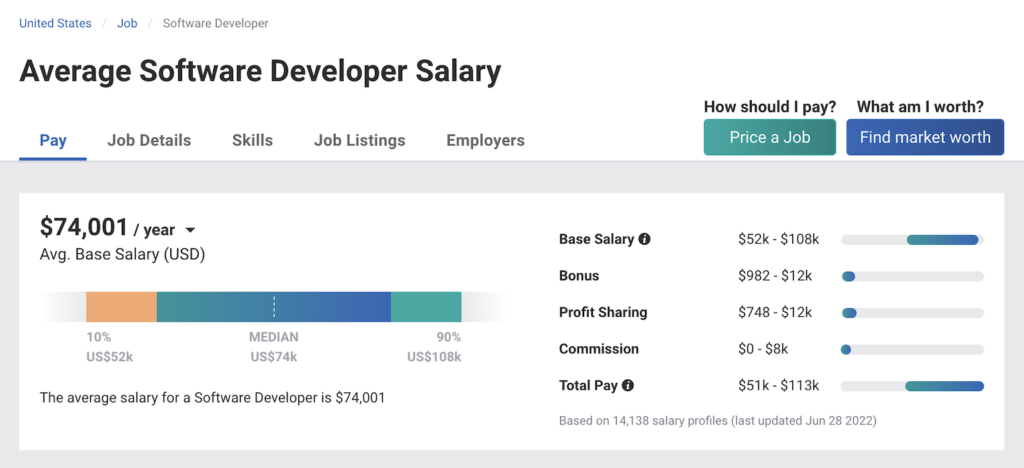The Benefits of a Dedicated Development Team in a Competitive Market
The Benefits of a Dedicated Development Team in a Competitive Market
Blog Article
Committed Developers vs. In-House Teams: Which Is Right for You?
The decision between using committed designers and preserving an in-house group is a substantial one that can influence the trajectory of your tasks and general business strategy. Committed developers supply a level of flexibility and specific competence that can be useful for details, short-term efforts. Alternatively, in-house teams add to a cohesive company society and a nuanced understanding of long-lasting goals. By analyzing vital factors such as budget plan, project extent, and preferred control, you can much better establish which approach aligns with your organizational needs. However, the effects of this selection prolong beyond prompt end results-- consider the broader impact on your organization landscape.
Comprehending Committed Developers
The growing demand for specialized skills in the tech industry has led to the appearance of specialized designers as a viable option for several organizations. These experts are generally contracted on a task basis, enabling business to leverage specific expertise without the lasting commitment connected with full-time hires. Dedicated designers are often ingrained within a customer's team, providing versatility and scalability to fulfill project requirements.
This design allows organizations to access an international ability swimming pool, which is particularly beneficial in a rapidly evolving technological landscape. Devoted designers can be sourced from various geographical areas, making sure that firms can find the ideal ability at affordable rates. They frequently bring a riches of experience and understanding, having serviced diverse tasks across different sectors.
Furthermore, dedicated designers can concentrate exclusively on the jobs at hand, improving productivity and effectiveness. They are outfitted to incorporate seamlessly into existing operations, collaborating closely with in-house teams to accomplish task goals. This method not just lowers the concern of employment and training but likewise permits companies to continue to be active, adjusting quickly to altering market needs and technological advancements.
Benefits of In-House Teams

In addition, internal teams have a tendency to have a much deeper understanding of the company's goal, values, and goals. This alignment can enhance staff member interaction and inspiration, as staff member feel extra connected to their work and the company's success. Furthermore, having a committed in-house team permits far better placement of methods and goals, as these participants are constantly concentrated on the company's top priorities.
Internal groups also facilitate quicker decision-making procedures, as they can respond more quickly to obstacles and modifications. The well established partnerships and knowledge with business procedures enable streamlined workflows and minimized miscommunication. Inevitably, the mix of a cohesive society, placement with business objectives, and reliable interaction makes in-house groups review an important possession for many organizations, specifically those aiming to cultivate long-lasting development and development.
Cost Considerations
When reviewing price considerations, both in-house teams and specialized designers present unique economic effects for companies. Engaging devoted developers normally entails a pay-per-project or hourly rate version, which can be economical for companies with fluctuating project demands. This strategy enables versatility in scaling resources up or down, making certain that firms only spend for the solutions they need.
In comparison, in-house groups involve repaired prices, consisting of incomes, benefits, and overhead costs such as workplace and devices. While this model uses higher control and immediate availability of sources, it might lead to higher long-term expenditures, especially if the work does not validate a full time staff.
In addition, business ought to take into consideration the hidden expenses connected with recruitment and training of internal employees, which can even more strain budgets. In many cases, the time and sources invested in handling an internal team can detract from the organization's core company goals.

Project Monitoring and Versatility
Job monitoring and flexibility are vital variables that influence the selection between committed designers and internal groups. Dedicated developers usually use a high level of versatility, permitting organizations to scale resources up try this out or down based on job demands. This agility can be specifically useful for businesses experiencing fluctuating workloads or those seeking to introduce quickly. Committed groups usually have actually developed processes for managing projects successfully, leveraging specific techniques like Agile or Scrum, which help with iterative development and flexibility.

Ultimately, the option in between committed designers and internal teams depends upon the preferred degree of versatility and the particular job monitoring needs. Business must evaluate their functional characteristics, job complexity, and source schedule to determine which choice lines up best with their calculated objectives.
Making the Right Option
Choosing the best growth technique-- dedicated programmers or in-house teams-- requires a mindful assessment of various factors that line up with a business's tactical goals. On the other hand, in-house groups can offer far better connection and combination with existing employees.
Following, evaluate your budget plan. Devoted programmers typically present a cost-efficient solution for temporary jobs, while in-house groups may incur greater long-lasting expenditures due to wages, benefits, and expenses expenses. Evaluate the degree of control and partnership Continue desired; in-house groups normally foster stronger communication and alignment with business culture.
If immediate outcomes are needed, committed designers can be onboarded rapidly, whereas constructing an in-house group takes time for recruitment and training. If continual growth is essential, spending in an internal group may generate far better returns over time.
Verdict
In final thought, the choice between committed developers and internal groups hinges on task requirements and organizational objectives. Conversely, internal teams cultivate a cohesive society and much deeper placement with long-lasting objectives.
The decision between utilizing devoted programmers and preserving an in-house group is a significant one that can affect the trajectory of your tasks and overall service strategy.Task monitoring and flexibility are important elements that influence the choice between dedicated designers and in-house teams. dedicated development team.In comparison, in-house groups may stand out in keeping a consistent task monitoring structure due to their experience with the company's culture and long-term goals. Dedicated programmers frequently provide a cost-efficient remedy for short-term tasks, while internal teams might incur higher long-term costs due to salaries, benefits, and expenses expenses.In verdict, the choice in between specialized developers and in-house groups pivots on job demands and organizational objectives
Report this page